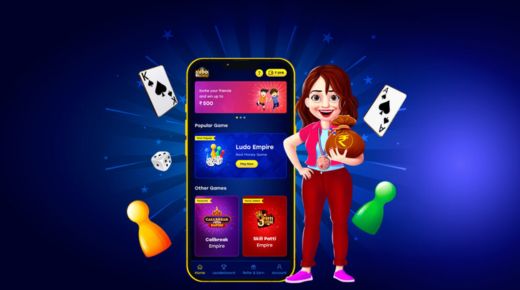
Tracing the Origins of Ludo – From Ancient Times to Modern Gameplay
Ludo, a game that has brought joy and strategy to countless households, has a rich history that spans thousands of years. What began as an ancient pastime has evolved into a beloved modern board game with a global following. In this blog, we’ll embark on a journey to trace the origins of Ludo, exploring its historical roots, transformation over the centuries, and its rise to prominence in the digital age.
Ancient Beginnings: The Origins of Ludo
1. The Ancient Game of Pachisi
Ludo’s origins can be traced back to the ancient Indian game of Pachisi, often referred to as the “Royal Game of India.” Pachisi dates back to the 6th century AD and was played on a cross-shaped board with a distinct pattern of squares and circles. The game was enjoyed by Indian royalty and depicted in various historical artefacts and murals.
Key Features of Pachisi:
– Board Layout: The board was typically made of cloth and featured a cross-shaped design with a central square and four arms extending from it.
– Tokens and Dice: Players used six or seven tokens and threw six or seven dice-like objects called “Pachisi” to determine their moves.
– Gameplay: Similar to Ludo, Pachisi involved racing tokens around the board while capturing opponents’ pieces and navigating obstacles.
2. The Evolution of Chaupar
Chaupar, a variant of Pachisi, emerged around the 16th century and continued to be popular in India. Unlike Pachisi, Chaupar was played on a rectangular board and used different rules and gameplay strategies. Chaupar’s influence helped shape the development of the game that would eventually become Ludo.
The Birth of Modern Ludo
1. The Introduction of Ludo in the West
The transition from Pachisi to Ludo began in the late 19th century. British colonialists brought Pachisi back to Europe, where it was adapted and simplified for Western audiences. In 1896, Alfred Collier patented the simplified version of Pachisi, which he named “Ludo.”
Key Changes in Ludo:
– Board Design: Ludo’s board was square and featured a simplified cross-and-circle pattern compared to Pachisi’s intricate design.
– Gameplay Adjustments: The game was streamlined to use a single die and four tokens per player, making it more accessible and easier to play.
2. The Popularization of Ludo
Ludo quickly gained popularity in Europe and North America. Its simplicity, combined with strategic elements, made it appealing to a wide audience. The game was often marketed as a family-friendly pastime, suitable for players of all ages.
Key Milestones:
– Board Game Production: Ludo boards and sets became widely available, and the game was featured in various toy catalogues and stores.
– Cultural Impact: Ludo’s popularity grew, and it became a staple in many households, influencing other board games and adaptations.
The Digital Age: Ludo Online
1. The Transition to Digital Platforms
With the advent of technology, Ludo made its way into the digital realm. The transition from physical boards to online platforms marked a new chapter in the game’s history. Digital Ludo app offers players the convenience of playing from anywhere and at any time, with enhanced features and interactive elements.
Key Developments:
– Online Platforms: Various online platforms and apps, such as Ludo King and Ludo Star, have brought Ludo to smartphones.
– Real money earning features: Digital versions offer Ludo real cash games where players can play their favourite game, win, and earn real cash.
2. The Global Reach of Digital Ludo
Online Ludo has expanded the game’s reach, connecting players from different parts of the world. The global gaming community can now compete in real-time matches, participate in tournaments, and enjoy Ludo’s classic charm with a modern twist.
Key Benefits:
– Accessibility: Players can enjoy Ludo without the need for physical boards or pieces.
– Earning: Players can earn real cash daily by playing Ludo on some of the best online game apps.
The Legacy of Ludo
Ludo’s journey from ancient India to the digital age highlights its enduring appeal and cultural significance. What began as a royal pastime has evolved into a beloved game enjoyed by millions worldwide. Its ability to adapt to changing times while retaining its core elements is a testament to its timeless charm.
Reflections on Ludo’s Impact:
– Cultural Heritage: Ludo’s historical roots connect players to ancient traditions and cultures.
– Modern Entertainment: The game’s evolution into the digital realm demonstrates its continued relevance and adaptability.
Conclusion
Tracing the origins of Ludo reveals a fascinating journey through history, from the ancient game of Pachisi to the modern digital experience. Ludo’s transformation over the centuries reflects its ability to captivate players across different eras and cultures. Whether you’re rolling dice on a physical board or tapping on a screen, Ludo remains a game that brings people together, blending strategy and chance in a way that continues to delight players around the world.
So, the next time you roll the dice and move your token, remember the rich history that has shaped the game you’re playing. From ancient times to modern gameplay, Ludo’s legacy endures, and its story is far from over.



